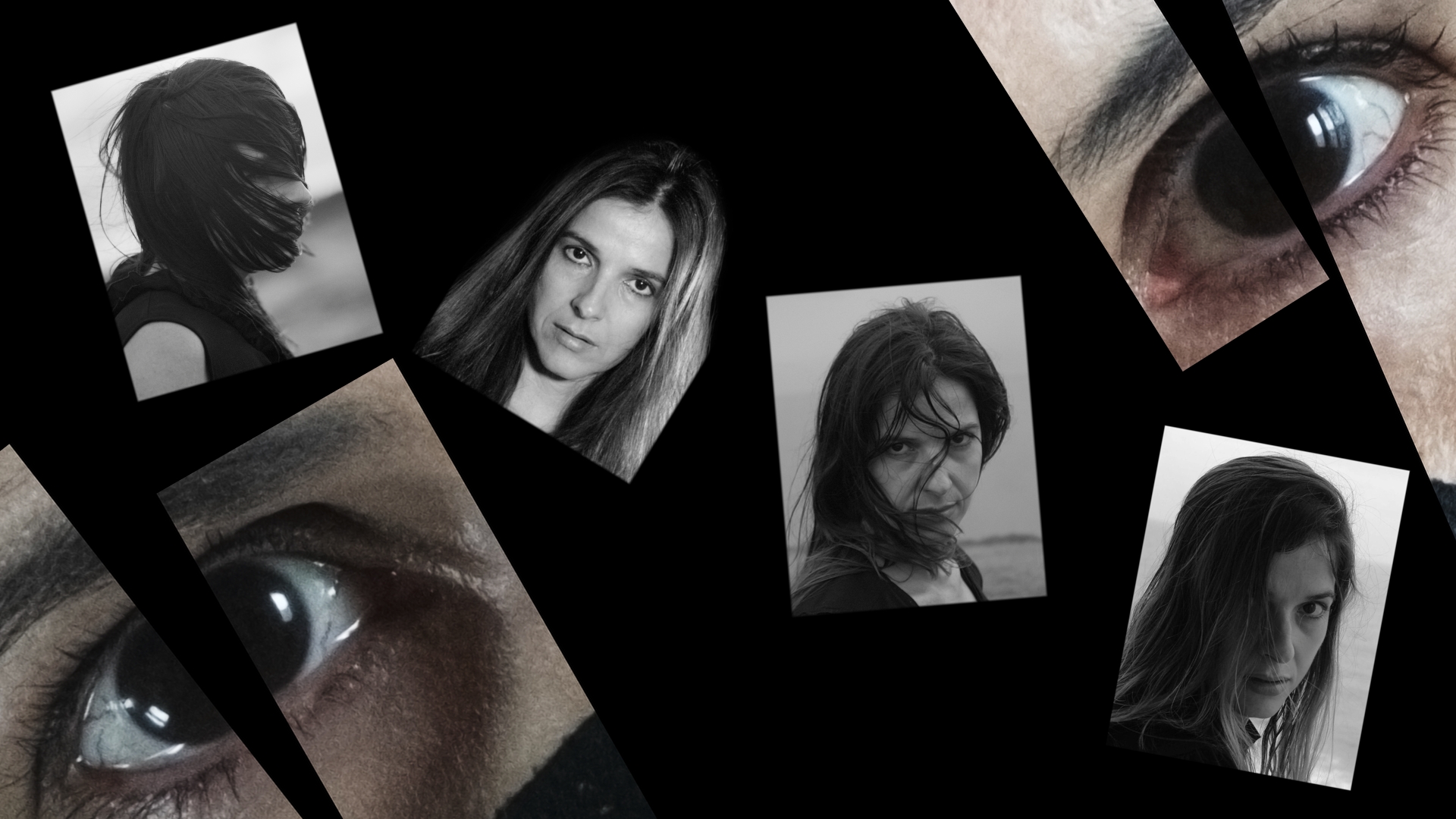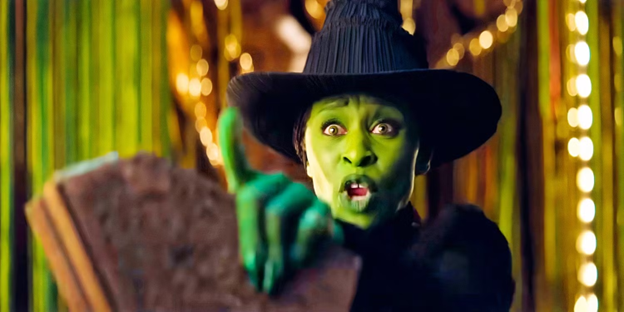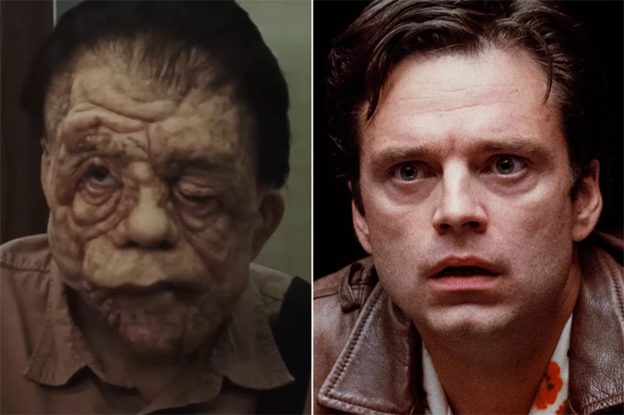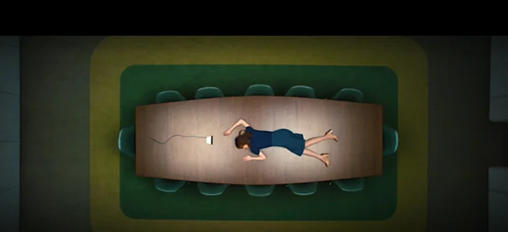
December 16, 2014
The Animal That is 3-D
Godard’s estrangement of both linear perspectival compositions and narrative content calls everything into question, including the question itself. Twice in the film, Godard’s voiceover cites Primo Levi’s quotation of a guard at Auschwitz––“There is no why”––but the statement also serves, perversely, as a preemptive response to critics posing interpretive questions to the film.
“The idea” of the film, in Godard’s words, “is simple. A married woman and a single man meet. They love, they argue, fists fly. A dog strays between town and country. The seasons pass. A second film begins …” But in the viewer’s reality, the film is insistently obtuse; anyone who tells you otherwise is lying. Forget trying to tie together plot points to form a whole; it is hard enough to understand what is happening, moment by moment, in any single scene.
In typical Godardian fashion, characters are double-cast, or presented alongside eerily similar others; their faces obscured in shadows or obscured by some object (a chair, a car) in the foreground of the frame; or they deliver crucial lines of dialogue from off-screen. It is probably an overstatement to call his actors characters. As one of them says, the line dripping with the recognition of its own dramatic irony: “I hate characters.”
There has not been a “why” in Godard for some time, certainly not since 1980 when he made his “second first film.” In this period known as “late Godard,” exemplified by Goodbye to Language, there is a concern, instead, with the “how.” Like a gigantic Technicolor digestive system, Godard’s omniscient editorial hand assembles, breaks apart, and rearranges planar surfaces and storylines. The chaos of this process of constructing and deconstructing constitutes the plot: a valediction to the grammar of the film.
Violently––at the sake of clarity, continuity, and the audience’s interest––the film resists all the realist claims that spectacular cinema so often aspires to achieve. Building his own custom-made camera rigs, experimenting with hi-def Canon cameras and lo-fi GoPro headsets, and adding on the 3-D effects in post-production, Godard’s imaginative creation is itself “an adventure of possible reason”––as Maurice Blanchot says of science fiction. Or as the film’s first title meta-critically announces: “Those lacking imagination take refuge in reality.”
Just as a great dystopic novel puts forth a critique of contemporary political philosophy in the guise of its futuristic inventions, this attention to cinematic technology serves more to warn of its power than to celebrate it. At one point, Godard even links the invention of television, in 1933, to the rise of Hitler that same year. 3-D itself appears as a sort of Frankenstein-like character in the film, a monstrously misunderstood technology, unwieldy and uncertain. The film’s analysis of state power and violence, issued in its invented and cited dialogue, also immanently unfolds on the level of form: on the planar surfaces, so to speak, of film itself.
Such a dense saturation of forms, shapes, colors, and techniques permeate the film’s seventy minutes that it seems to demand a second viewing. Blink or doze off, and it’s gone. The body’s response to every frame’s barrage of optical tricks and sonic cacophony is battle fatigue.
In a subversion of stereo technology, Godard superimposes the lens of one camera straying after one character out of the frame, while the other camera stays steady. Eyeballs stretched, viewers must choose which eye to close in order to resolve the image one way or another. Closing one eye, then another, we enact own shot-reverse-shot editing, like directors. (When this happened at the film’s premier at Cannes, the audience erupted into applause, with one viewer shouting “long live Godard!”) Godard later uses this effect of shattering the screen’s surface in a clever prank. When a nude man and a nude woman appear onscreen, you see both until you close an eye to decide which gender you’d prefer to see clearly. The strained eye reveals itself as a highly constructed—and malleable—organ, learning again to see in all dimensions, as though for the first time.
Perhaps watching Goodbye to Language, with its interactive sensory assault, approximates what it felt like to see Godard’s first film, À bout de soufflé (Breathless), when it was released in 1960. At the time, his film’s use of the jump cut and aggressive collage techniques was such a radical affront to Hollywood’s dominant style that it felt, to some viewers and reviewers, like a breath of fresh air––or to the shocked critics who reacted with gasps, like a loss of breath. But once his jump cut became common trick of the trade, Godard had to find other ways to shock audiences and advance his interruptive aesthetic. These dissociated planes, disorienting to the max, represent his latest, and arguably greatest, innovation of avant-garde techniques.
Like the play of light and shadow animating the troglodyte drawings on the cave wall in Herzog’s (3-D) documentary The Cave of Forgotten Dreams, Godard’s images recapture the beginnings of film and gestures towards its rebirth. One shot shows the elongated shadows of two characters on an asphalt road. The 2-D shadows dance on the road, receding in the distance and rendered in 3-D. The sun’s original motion picture, the most ordinary image of modernity, again made sacred in all its stereo glory.
Observed
View all
Observed
By Ava Kofman
Related Posts

Arts + Culture
Susan Morris|Cinema
‘The conscience of this country’: How filmmakers are documenting resistance in the age of censorship

Arts + Culture
Alexis Haut|Cinema
It’s Not Easy Bein’ Green: ‘Wicked’ spells for struggle and solidarity

Arts + Culture
Alexis Haut|Cinema
About face: ‘A Different Man’ makeup artist Mike Marino on transforming pretty boys and surfacing dualities

Arts + Culture
Alexis Haut|Analysis
Innies see red, Innies wear blue: Severance’s use of color to seed self-discovery
Recent Posts
Why scaling back on equity is more than risky — it’s economically irresponsible Beauty queenpin: ‘Deli Boys’ makeup head Nesrin Ismail on cosmetics as masks and mirrors Compassionate Design, Career Advice and Leaving 18F with Designer Ethan Marcotte Mine the $3.1T gap: Workplace gender equity is a growth imperative in an era of uncertaintyRelated Posts

Arts + Culture
Susan Morris|Cinema
‘The conscience of this country’: How filmmakers are documenting resistance in the age of censorship

Arts + Culture
Alexis Haut|Cinema
It’s Not Easy Bein’ Green: ‘Wicked’ spells for struggle and solidarity

Arts + Culture
Alexis Haut|Cinema
About face: ‘A Different Man’ makeup artist Mike Marino on transforming pretty boys and surfacing dualities

Arts + Culture
Alexis Haut|Analysis
